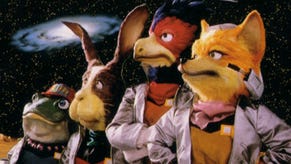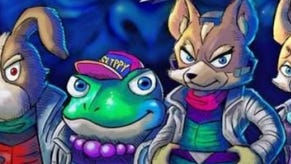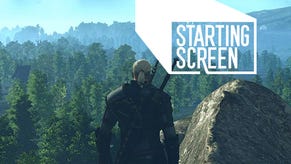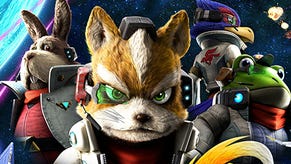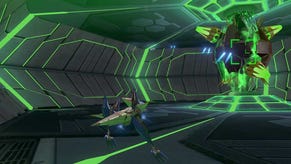A Bathtub Full of Acid: The Story of How Dylan Cuthbert Went From Making 3D Engines for Game Boy to Star Fox
The Super NES's most impressive tech trick would never have happened without a bit of unauthorized Game Boy hacking.
This article first appeared on USgamer, a partner publication of VG247. Some content, such as this article, has been migrated to VG247 for posterity after USgamer's closure - but it has not been edited or further vetted by the VG247 team.
25 years ago, Nintendo graced up with the Super NES's most surprising party trick. The console, which had achieved a reputation for being slow and underpowered thanks to a tendency within its early library for straightforward two-dimensional action games to choke with slowdown, somehow became a 3D powerhouse with the arrival of rail shooter Star Fox. Of course, the console could fake 3D effects decently thanks to its built in "Mode 7" feature, but that trickery impressed less by the time 1993 rolled around. Sega had shipped Virtua Racing to arcades around the world the year before; wonderful as Mode 7 racing games like Super Mario Kart were, they paled in comparison to the high-resolution, silky-smooth, true polygonal effects of Sega's Model 1 games.
Star Fox put the Super NES back in the fight. While the game's choppy frame rates and low resolution visuals couldn't begin to match the competition's expensive bespoke arcade hardware, there was no getting around the fact that Star Fox rendered its world in true 3D with actual polygons and a dynamic, adjustable viewpoint that put players into the action in a way never before seen on a home console. Suddenly, the console that wheezed to a crawl whenever bullets appeared on-screen in Konami's 2D shooter Gradius 3 was cheerfully producing the kind of visuals that, in 1993, you only should have been able to find on the vastly more expensive 3DO platform.
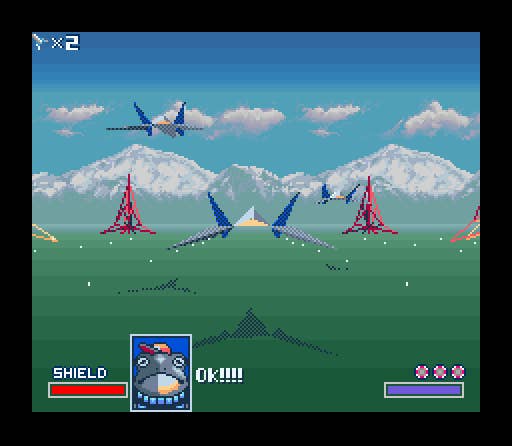
Nintendo didn't create Star Fox on its own, however. It owed its existence to a British studio by the name of Argonaut, who collaborated with Nintendo's internal teams to make 3D space shooting a reality on 16-bit hardware. Argonaut's secret weapon? A young programming prodigy by the name of Dylan Cuthbert. Now the president of Q-Games (of PixelJunk fame), Cuthbert was barely out of his teens when he became one of the first people from outside of Japan to work with Nintendo's internal development teams in their Kyoto headquarters. His ability to coax next-generation chicanery out of limited hardware had been developed over the course of a decade, beginning with Sinclair's humble 8-bit microcomputers, the ZX 81 and ZX Spectrum.
Cuthbert says he learned programming as a matter of sheer practicality, since it was the only way he knew how to get ahold of games for his computers. "In those days, it wasn't like a console," he says. "When you got one of these things, you didn't really get any games with it, so you just had to make the games yourselves. It took me maybe a year of typing in programs and doing stuff that way to realize, 'Oh, I can go to a shop and spend some pocket money and get a professionally made game.'"
Inputting other people's code soon became a gateway to creating his own. "You think, 'Oh, actually, I could probably do something like this,'" he recalls. "You start thinking about how you want to make your own game studio or whatever. By the age of 13, maybe even younger than that, I was already sketching logos and stuff."
Where American programmers like Robert Woodhead and Michael Cranford got their start on relatively powerful machines like the Apple II and Commodore 64, the U.K. was dominated by Sinclair's microcomputers. The ZX line, however, sacrificed performance for affordability. "The Spectrum was quite limited," Cuthbert says. Yet he also notes that the hardware, despite its limitations, wasn't as constrictive as something like the VIC-20. "There were a few technical things that you can play with like hacking it so you could display graphics in the border around the screen. Very simple stuff like that."
By probing the Spectrum's limitations, Cuthbert began to come up with interesting tricks. One of his first creations made use of simplistic gravity physics similar to First Star Software's hit Boulder Dash—a game that ran on Spectrum, but barely. "I made one game which was like a platformer, but in the stages, there were lots of balls [with a] very crappy physics simulation. If one fell on another ball, it would fall to the left or right if there was a space there. You had to make your way around the level and knock out blocks and try and get the balls out of the way so you could escape the level."
Cuthbert included this project as part of his portfolio when he went knocking on Argonaut's door in search of a job. The company turned him down, having already shifted its focus to 3D game design, even in the mid-1980s. Rather than give up, Cuthbert set his sights on the more powerful Amiga platform and attempted to work out how to simulate 3D graphics on that computer.
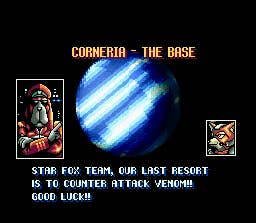

"At the end of the day, I had this rotating 3D theme logo—a company logo kind of thing. I sent that into Argonaut by post, and the next day, [company president] Jez [San] called me up and said, 'Do you want a job tomorrow?'"
Cuthbert's experience with the Spectrum turned out not to be in vain. While Argonaut had moved beyond that platform by the time he joined the company, Sinclair's popular computer turned out to have a great deal in common with the system on which Cuthbert would ship his first game: The Nintendo Game Boy. Although the handheld console might not seem particularly similar to an old 8-bit computer, both platforms were powered by variants of the same microchip. More than that, both suffered from severe visual limitations; where the Spectrum had its infamous color bleed, the Game Boy didn't even include enough video memory to allow developers to display a full-screen image.
Somehow, though, Cuthbert managed to figure out how to coax convincing 3D graphics out of the Game Boy. That wasn't his original plan, however. Once he joined Argonaut, San put him on projects for a sophisticated upcoming console called the Konix Multisystem. The Multisystem would have been arguably the most powerful console on the market if it had launched in 1990 as planned. Unfortunately, the company scuttled the project, and Cuthbert found himself instead working on projects for the least powerful console of its era.
"[Konix] had all this stuff at [a trade show]. But then suddenly, I don't know, they reached the end of their budget or something, and they just suddenly... stopped. Everyone was kind of left in the lurch. Jez had seen the Game Boy at [a recent Consumer Electronics Show]. He said, 'OK, we're going to make games for that, and you're going to make a 3D engine for it.'"
At the time, however, official Nintendo development kits were hard to come by. Argonaut didn't have an in with the Japanese console powerhouse, which meant they had to learn the ropes of Game Boy programming the hard way: By reverse-engineering the system. It was becoming something of a British tradition. As it happens, U.K. developer Rare had also fallen into Nintendo's orbit by breaking down the workings of the Nintendo Entertainment System. Rare quickly became Nintendo's most valuable western development partner, but Argonaut didn't have any such lofty ambitions. They just wanted to figure out how the Game Boy worked.
"We hacked together a Game Boy development kit with a camera pointed at the Game Boy," says Cuthbert. "We took a cartridge—I think a Tetris cartridge—and unscrewed it all. We connected up wires to chips and connected them to this circuit board one of the guys had at Argonaut [made]. They'd gotten into circuit printing and were printing the circuit boards in this bath full of acid."

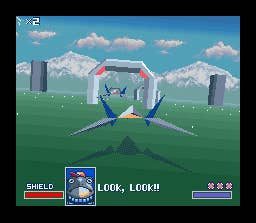
From these humble beginnings—a bathtub full of acid and homemade chips—Cuthbert began to get a handle on the system. "I got to the point where I could actually program, compile, and get code on the screen within a very quick time," he says. "So, I started developing a 3D engine on the Game Boy. It had an awful screen, and the graphics chip was pretty basic."
Cuthbert designed his first project in the style of Argonaut's computer hits like Starglider 2: A 3D shooter that allowed full 360-degree movement through space. While this wasn't an entirely unheard-of idea for an 8-bit system—the immersive space sim Elite had run on ZX Spectrum, after all—pulling it off on Game Boy was a remarkable hack. Unsurprisingly, it quickly caught Nintendo's attention.
"I developed that and it was kind of running quite nicely, with wireframe graphics," Cuthbert says. "One of the business development guys at Nintendo saw it. He said, 'Now you've got to go and show this to the Nintendo HQ guys, because they'll be really surprised,' and he sent them a ROM of it. The guy who made the Game Boy, [Gunpei] Yokoi-san, and also Isuno-san, one of the engineers behind it... when they first saw it, they were so blown away by it, they asked for us to be flown over to meet them."
Nintendo found themselves so impressed by Argonaut's efforts they didn't simply upgrade the studio to official third-party developer status; they brought the game in-house. Cuthbert ended up developing the game in partnership with talent from Nintendo's R&D1, the division responsible for Game Boy's design. The shooter evolved over time and saw release in Japan in 1992 under the difficult title of X.
"The title was decided by [Nintendo president Hiroshi] Yamauchi," says Cuthbert. "He just suddenly called up [Yoshio] Sakamoto-san, who was the director on the game, a month before we finished it, and said, 'You're calling it X.' Sakamoto said it was like Yamauchi didn't care—it's 7 a.m. and he just called Sakamoto directly and just said, 'You're calling it X.'"
Despite it being the work of a novice game designer who had yet to ship a commercial project, Nintendo didn't dominate X's development process. Instead, R&D1's seasoned designers helped guide its direction. "The entire game design was mine," says Cuthbert. "Most of it was in place before we talked to Nintendo. I'd suggest ideas and then they'd give me feedback on some of the ideas, sort of like a little back-and-forth. Then we'd flesh it out. It was almost a one-man project in effect, but with a little bit of Nintendo touch to it.
"What Sakamoto-san brought to the table, really, was fine-tuning—adding touches to make it more user-friendly. Like these bases that you have to dock with. He designed it so there were two spires on either side so you could actually line it up and work out where to go."
At the same time, Nintendo's involvement also introduced some complications into X's development cycle. The company's high quality standards forced Cuthbert to rework his engine to account for a glitch caused by a hardware edge case. "There was a really annoying problem at the end of the development," he says. "Nintendo have this thing where they do a test on all versions of their hardware [to make sure it works on] all revisions.
"I think there were seven or eight Super Nintendos, and each one is actually a different revision internally. On the Game Boy, they had the same thing. They were all fine, apart from the very first revision. It had a bug in the hardware. There were only 100,000 sold of this first revision... I don't think anyone even had them at that point anyway, because those original Game Boys had a problem where the screen would peel off. But they still had to make [X] work on it. I had to add a program [...] that is running all the time, even on the new Game Boys, and it slows down the game by another frame."
Nintendo's role as publisher also meant it never saw release outside of Japan. The company promoted and previewed X for Western release under the title Lunar Chase, and what appears to be completed product artwork has made its way onto the internet. Ultimately, though, Lunar Chase never reached retail—despite the fact that, Cuthbert says, "It was completely finished. It was all fully localized and had some really funny English in it as well. I thought it played really well in English."
Of course, that fate would also befall another, more famous project by Cuthbert: Star Fox 2. That game ended up being shelved for more than two decades until being dredged up last year by Nintendo for the Super NES Classic Edition mini-console. Does that mean we can expect to see Lunar Chase on a future Game Boy mini?
"I wish!" says Cuthbert. Unlike the data for Star Fox 2, which Cuthbert kept in his personal archives, he doesn't have code for Lunar Chase; it never occurred to him to keep a backup of the localized version. He admits the English release's cancellation "was really disappointing. It was the first game I'd made professionally that got through release." Unfortunately, Nintendo of America got cold feet due to a lack of faith in the U.S. audience—a common theme among Japanese publishers at the time, as can be seen with simplified localized releases that frequently appeared on Nintendo consoles in the early 1990s. Final Fantasy IV, for example, had much of its substance and challenge stripped out for the U.S. version, which was later republished in Japan under the name "Easytype." Lunar Chase suffered a similar fate.
"We made the English version, and then Nintendo of America felt it was too complicated," says Cuthbert. "At that time, there wasn't a Nintendo Europe to kind of stick up for it, you know? [NOA] said, 'Our audience right now expects something like Tetris.' 'There's too much text.' That kind of thing. There wasn't really that much hungriness for 3D in America at that point. Later on, after Star Fox came out, you know, there was a lot more."
A few months after Star Fox's release, Doom would hit DOS-based computers. Doom almost single-handedly normalizing 3D games... despite not technically being rendered in true 3D itself. In 1992, however, Nintendo evidently felt American kids would have been overwhelmed by the need to navigate the third dimension.
Cuthbert's work on X may have failed to reach its full intended audience, but the project bore other fruit. It was at Argonaut's initial meeting at Nintendo headquarters that the seeds for what would become Star Fox were first planted—seeds that almost changed the nature of the Super NES itself.
During their initial meetings at Nintendo, Cuthbert recalls, "they showed us early prototypes of F-Zero, Mario World, Pilotwings on a prototype Super NES, which we'd never seen before.
"Pilotwings was the most completed of those games. It was pretty much finished up. They said they'd had to use a DSP add-on chip to do the 3D calculation for the horizon."
Nintendo had first experimented with add-on chips during the NES era. The console's designer, Masayuki Uemura, deliberately built the potential for expansion into the hardware. While that feature never saw use in the American or European NES, Japanese gamers benefited from it several times over. Many third-party developers created custom chips that enhanced the console's capabilities, adding special graphical effects or arcade-quality music.

Add-on cartridges literally contained a co-processor inside that would execute code and feed it back into the system. When Uemura designed the NES's follow-up, he retained this feature, and developers came up with some remarkable expansions. Perhaps most impressive are the Japan-only board games that contain, in effect, 32-bit RISC chips that could handle the complex calculations needed to allow for speedy artificial intelligence-based opponents in go and shogi games. The DSP chip Nintendo used, however, was much simpler—so simple, in fact, that the Argonaut team felt it wasn't even necessary.
Cuthbert explains, "We looked at it and we said, 'You know, you could probably use our 3D math know-how to do that without the DSP chip.' [Pilotwings director Shigeru] Miyamoto said, 'Well, actually, you see this plane? We actually want to rotate this around, in any angle, but we can't because we have to draw every frame and it uses too much memory. We can't get all the angles, and what we really wanted is to render this using this kind of polygon technology that you guys have.'
"We ended up thinking about that for a bit, and Jez came up with the idea of [putting] a 3D chip on the cartridge that will do this kind of stuff for future games? Actually push the 3D potential of Super Nintendo?"
In that moment, the SuperFX chip was conceived, inspired by the DSP-based trickery Cuthbert had experimented with during Argonaut's brief flirtation with the doomed Multisystem. The SuperFX chip made Star Fox's polygonal graphics possible. Unlike X's use of simple wireframes and rasterized fakery, Star Fox would incorporate proper, filled polygons. While Star Fox certainly has its limitations—linear play, low resolution, low framerate—it simply shouldn't have been possible on the Super NES.
If things had worked out differently, though, the SuperFX wouldn't have been a mere add-on—it might actually have been incorporated into the hardware.
"That's what they actually tried to do first," Cuthbert says. "They were thinking about it." Disappointingly, the timing didn't quite line up with Nintendo's plans.
"[The chip] still seemed a bit kind of like, in a buggy kind of state. We thought maybe there was a way to rush it and get a chip on there even quicker than that if we just used something from the Konix [Multisystem] directly. But they didn't have enough time to do that, because the Super NES was already building up to final production.
"They thought about everything, you know. Any kind of way to get that performance into the Super Nintendo."
It's fascinating to imagine how differently the 16-bit console race might have turned out if Nintendo had brought a system with true 3D capabilities into the world as early as 1990. Would the Super NES's trademark look of soft, colorful 2D sprites have been eschewed in favor of sharp, chunky polygons? Would 3D game mechanics have become standard fare a generation sooner? Or would the end result have been more akin to what Capcom did with its Mega Man X sequels, which included 3D enhancement chips that ultimately only powered a few gimmicky 3D elements overlaid atop traditional 2D art? It's impossible to know, but it makes for an interesting thought experiment.
Ultimately, though, we only saw proper 3D in a handful of Super NES titles, mostly from Nintendo itself. Star Fox would be the first, though Nintendo's home-grown DSP did show up in a few earlier titles like Super Mario Kart.
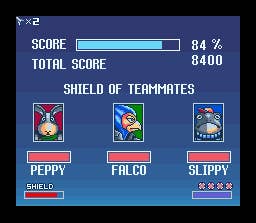
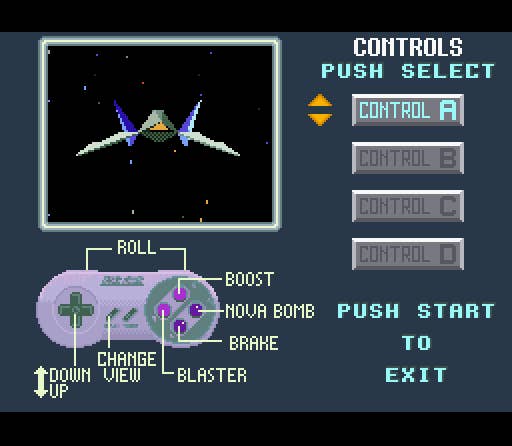
Unlike X, Star Fox came about through a holistic collaboration between Nintendo and Star Fox. Cuthbert says he personally drew a lot of influence from film and Argonaut's older work. The game unsurprisingly contains lots of little nods to popular movies of the era, like the flight through an asteroid field that appears to be a proud homage to The Empire Strikes Back. "There was definitely a lot of influence from movies," he says. "I mean, it's the early '90s and you're making video games, that would be the thing you'd always be trying to do—copy scenes from Star Wars. Stuff like that. Or scenes from 2001.
"The primary [game design] influence probably came a lot from Star Blade from Star Glider. Stuff like having the enemies flash when they're hit, which wasn't that common back then, was all a very arcade-y thing that was in Star Blade. It works so well."
Nintendo, however, also played a significant role in the creative direction of the game. Not surprisingly, the personable cartoon animals that comprise protagonist Fox McLeod's space combat team were a Nintendo invention. But so too were more significant design elements, some of which were—in inimitable Nintendo fashion—inspired obliquely by Japanese tradition.
"It became Star Fox probably in the last few months of development," Cuthbert says. "The team of animals and all that messaging went in really during the last 30 percent of the game.
"We started around the beginning of 1992. We were working on something that was a bit more all-range, a standard 3D shooting game. But that New Year, Miyamoto had been up to the Fushimi Inari shrine in Kyoto, which is the shrine with all the gates that go up into the mountain. And he'd gone to that one, which is near his house and Nintendo. As he was walking through the gates, he got this image: If we climb through this, it'd be kind of fun in 3D. It would be fixed and controllable game design, which he likes.
"We came back like from vacation, and he said, 'Well, I want to make the game just scroll forward.' We were like, 'What?' Because, you know, we assumed 3D was, like, all range. It never occurred to us to limit it to just scroll in one direction, and it really surprised us. But we re-engineered our systems to do that within a couple of weeks or so, and it worked really well. In a better, cleaner way, it was a lot easier for us to make the game."
Star Fox's combination of European tech finesse and Japanese design instincts (and cultural heritage) resulted in one of the most impressive and memorable games of the 16-bit era. It also pointed toward a crucial pillar of Nintendo's future—that is, external collaborations, which have yielded hit games like Metroid Prime, Yoshi's Woolly World, and even the Nintendo 64 hardware. And it all came about by chance, all because Nintendo caught wind of some guys from England who were hacking together Game Boy games in their bathtub.


